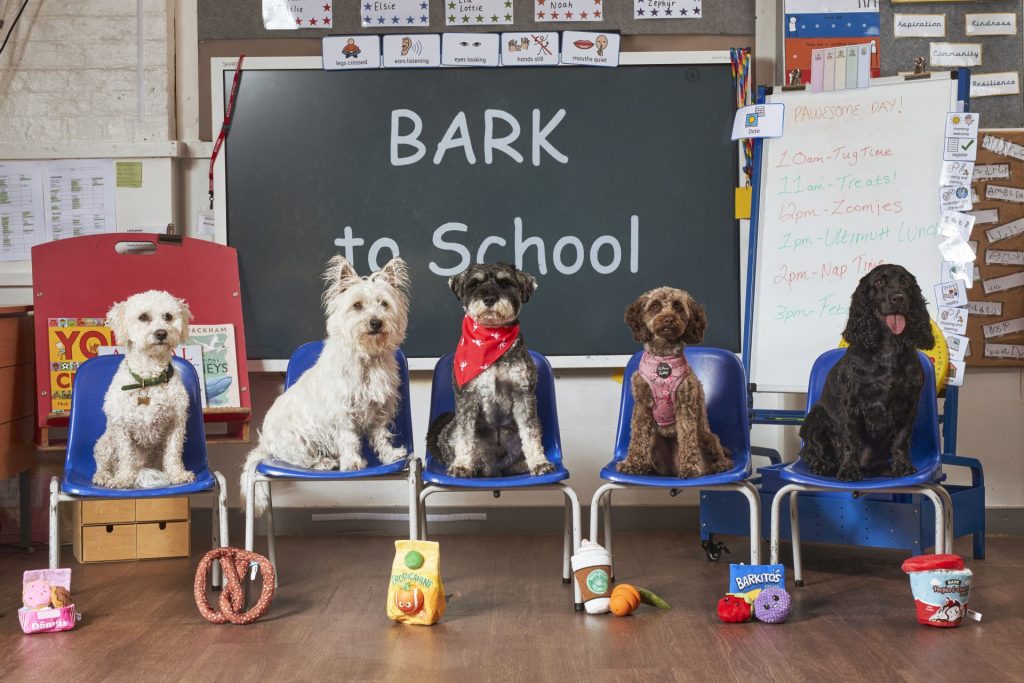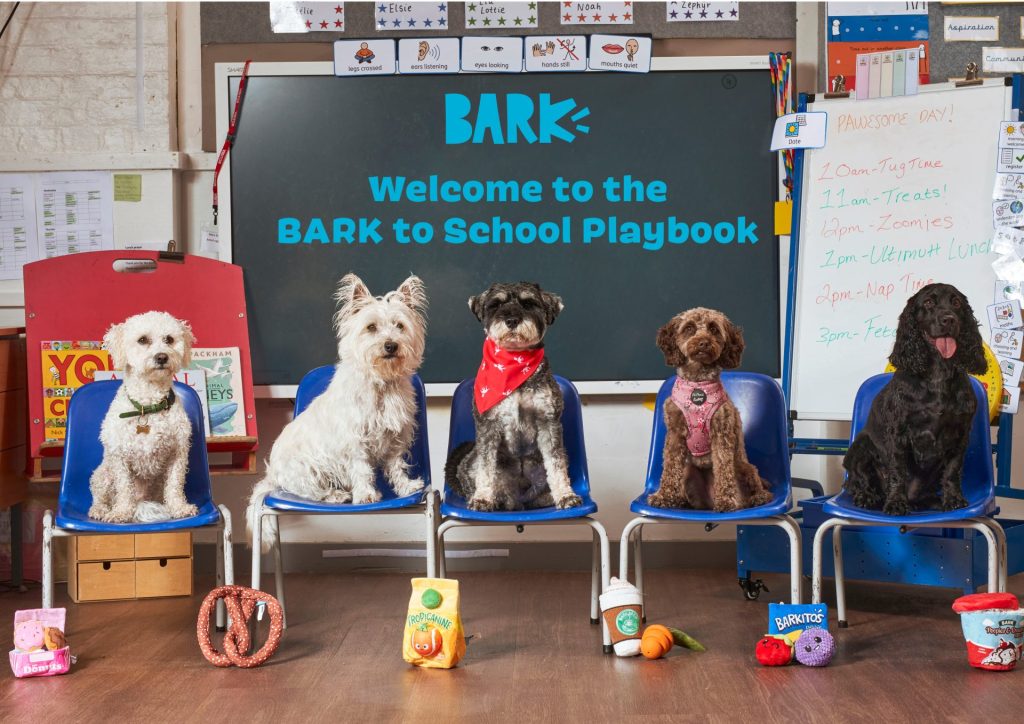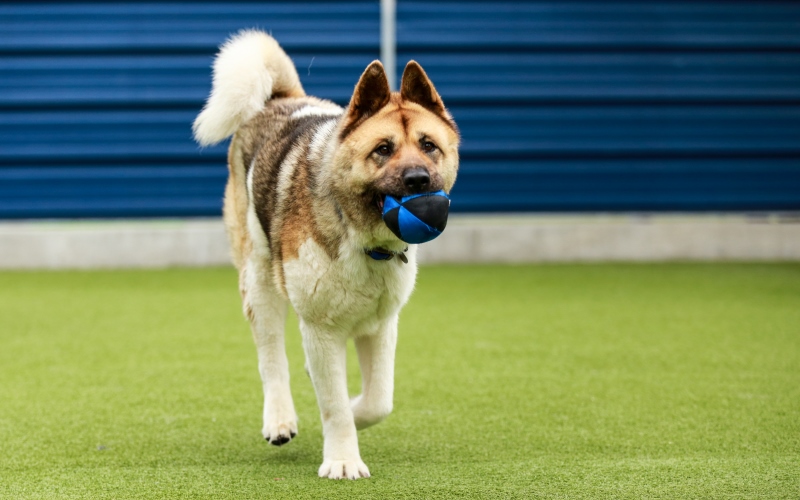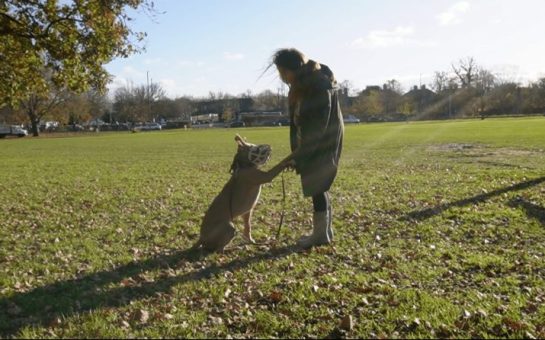Dog owners shirking their playtime duties believe going for a walk or watching TV together is enough to keep their pets happy.
Yet actively engaging their canine companions in stimulating games can help keep blood pressure under control, increase serotonin and reduce depression – and that’s just in humans.
As for our dogs, regular play is essential for both mental and physical stimulation. A lack of it not only damages bonding but can lead to 22 behavioural issues including anxiety and aggression.
A new survey of 2,000 British dog owners by BARK found that 62% expect to spend less time outdoors as the weather changes.
More than 8 in 10 pet parents (82%) considered walking to be a form of play, along with 28% who believe ‘watching TV’ on the sofa counts.
The research found that while owners recognised that 15-30 minutes of dedicated daily playtime is needed, over half (56%) do not manage it and 28% admitted they only play with their dog on three days a week.

Canine Behaviourist Shelby Semel explained: “Playing games with your dog is valuable for both mental and physical stimulation and also for strengthening the Dog to Human bond. You can bond further by learning dog body language; signs of being happy and playful Including a play bow, circular wagging tail, and mouth open and relaxed.”
Bonding and relationship strengthening was recognised as the most common benefit of play within the survey (60%), however almost half (49%) of owners were not aware that play also supports mental stimulation and training (64%).
Now US firm BARK is on a mission to change our habits with the nationwide launch of the BARK to School Playbook at Pets At Home.
With the help of canine behaviourist Shelby Semel and veterinarian Dr Margo Hennet, the playbook includes five play games based on BARK’s five archetypes of play, which includes simple and fun games to help bonding.
They are designed to be played for 5-10 minutes, two or three times a day and suitable for all breeds and sizes. Each exciting game focuses on specific materials, scents and play styles.
Dr Margo Hennet, Veterinarian at BARK said: “Scent games are great for reducing stress-related behaviours, whereas agility courses help increase endurance and physical fitness. That’s why we’re excited to be launching the BARK to School Playbook, as we want to encourage owners to increase playtime through fun and simple games that offer multiple benefits.”

The Ulti-Mutt Play Behaviours
Every dog has a unique way of playing. Some go crazy for toys packed with squeakers and crinkle, others lose their mind sniffing for treats in hidden pockets, flaps, or grooves. It’s their natural instincts that determine which materials, scents, or styles of play get them most excited. We call these instincts “The 5 Archetypes of Play Behaviour.” Your dog may fit just a couple, or all 5!
The Investigator
Mimicking a predator, their instinct is to investigate first, tug, pull, and shake. They differ slightly from The Destroyer, never acting alone and instead relying on you to be their partner in crime. The only question now is who will let go first?
The Tracker
Treating toys like family, they’ll never let them out of sight. If a toy vanishes, they’ll realise it right away, although they’re still a little puzzled as to where it’s gone. (Don’t forget to check under the sofa.)
The Pursuer
A dedicated chaser of squirrels and birds, with the intense desire to retrieve, and retrieve, and retrieve. Chances are, their energy will last longer than your throwing arm.
The Destroyer
Toy-obsessed and destructive by nature, they’ll rip their toys apart within seconds to “kill” that hidden squeak.
The Team Player
Open to learning, friendly, and always happy to share. They’re one step ahead, often watching you patiently with a toy until you’re ready to play. Or not-so-patiently, if you now have a slobbery toy in your lap.





Join the discussion